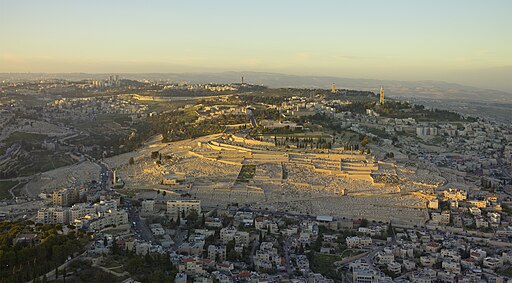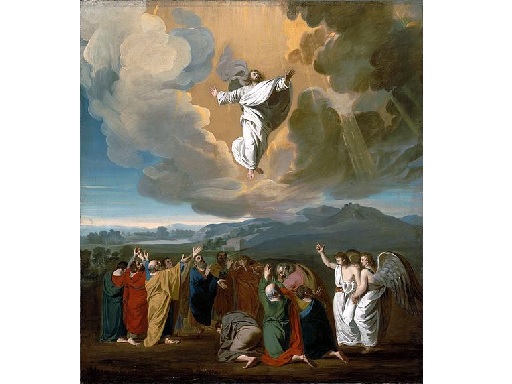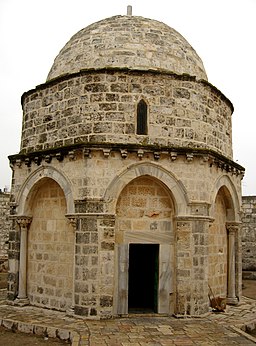Mount of Olives – the very place where Jesus taught, sang, made prophecies, and miraculously ascended to the heavens.
Here you will find everything you need to know before visiting this holy site!
- Why is Mount of Olives important?
- Where is Mount of Olives located?
- What are the main Christian attractions in Mount of Olives?
- What should I know before visiting Mount of Olives?
- Are there any fun facts about Mount of Olives?
Why is Mount of Olives important?
Several key events in the life of Jesus took place on the Mount of Olives.
The place is frequently mentioned in the New Testament as part of the route from Jerusalem to Bethany. However, Jesus not only passed through here, but he also spent time on the mount, teaching and prophesying to his disciples.
The New Testament even tells that Jesus and his disciples all sang together on this mountain – “When they had sung the hymn, they went out to the Mount of Olives.”
Perhaps most important than all, Jesus ascended to heaven from this very place.

Where is Mount of Olives located?
Mount of Olives is located just east of the Old City of Jerusalem, across the Kidron Valley.
What are the main Christian attractions in Mount of Olives?
There are many (many) Christian attractions in the area of Mount of Olives.
The main ones include:
- Augusta Victoria Hospital – this compound has rich and surprising history, that goes back to German Kaiser Wilhelm II.
Located on the northern side of the mountain, it includes the Lutheran Church of the Ascension and a 50 meter (164 ft.) bell tower. - Chapel of the Ascension – a shrine located on the mountain. It is part of a larger complex consisting first of a Christian church and monastery, then an Islamic mosque.
The site is believed to be the earthly spot where Jesus ascended into Heaven after His Resurrection, and it houses a slab of stone believed to contain one of the footprints of the Christ.
Chapel of the Ascension | en:user:adriatikus, CC BY-SA 3.0, via Wikimedia Commons - Holy Monastery Of The Ascension – a Greek Orthodox Monastery, just across the street from Chapel of the Ascension.
- Russian Orthodox Church of the Ascension
- Church of the Pater Noster – a Roman Catholic church located on the Mount.
The church is unroofed and has steps that lead into a grotto where Jesus revealed to his disciples his prophecy of the destruction of Jerusalem and the second coming. - Dominus Flevit Church – located on the western slope, this church has an amazing view to the Old City of Jerusalem.
- Church of Mary Magdalene – a Russian Orthodox church located on the western slope. The church has beautiful towers with golden tops.

Church of Mary Magdalene | Moataz1997, CC BY-SA 4.0, via Wikimedia Commons - Gethsemane – a garden at the foot of the Mount where Jesus underwent the agony and was arrested the night before his crucifixion.
- Church of All Nations – also known as the Church or Basilica of the Agony, is a Roman Catholic church next to the Garden of Gethsemane. It enshrines a section of bedrock where Jesus is said to have prayed before his arrest.
Believe it or not, but this is just a partial list!
What should I know before visiting Mount of Olives?
Because of its association with both Jesus and Mary, the mount has been a site of Christian worship since ancient times and is today a major site of pilgrimage for Catholics, the Eastern Orthodox, and Protestants.
Much of the top of the hill is occupied by At-Tur, a former village that is now a neighborhood of East Jerusalem. The people of At-Tur are Muslims, which means that Christianity, Judaism and Islam mix on the mountain – so be respectful to everyone’s beliefs.
For more information about Jesus in the Holy Land check out this amazing book on Amazon: 
Are there any fun facts about Mount of Olives?
Of course!
- The mount has been used as a Jewish cemetery for over 3,000 years and holds approximately 150,000 graves! This makes it central in the tradition of Jewish cemeteries.
- The highest point on the Mount of Olives is At-Tur, at 818 m (2,684 ft).
- The religious ceremony marking the start of a new month was held on the Mount of Olives in the days of the Second Temple.



